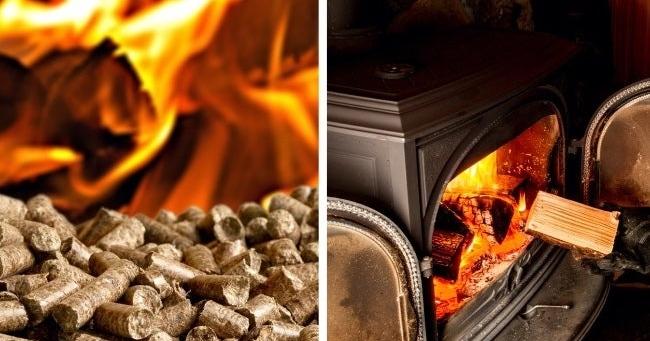In the realm of heating options, the debate between pellet stoves and traditional wood-burning heat has gained significant traction. Both offer unique advantages and drawbacks, catering to different preferences, budgets, and environmental considerations. To decide which heating method suits your needs best, it’s crucial to understand the fundamental differences between pellet stoves and wood heat.
Fuel Source
One of the most apparent distinctions between pellet stoves and wood heat lies in their fuel sources. Wood heat relies on seasoned logs, typically sourced from local forests or purchased from suppliers. In contrast, pellet stoves employ small, compressed pellets made from sawdust, wood chips, agricultural waste, or even some types of industrial waste. These pellets are manufactured and sold commercially.
Efficiency and Heat Output
Efficiency is a pivotal factor when comparing the two heating methods. Pellet stoves are renowned for their high-efficiency levels, often surpassing traditional wood stoves. The combustion process in pellet stoves is precisely controlled, leading to a consistent burn rate and heat output. Additionally, pellet stoves have automatic ignition, thermostatic controls, and fans to distribute heat effectively. On the other hand, wood stoves require more attention to maintain a steady temperature, and their efficiency can vary depending on factors such as wood quality, stove design, and operator skill.
Environmental Impact
In the context of environmental impact, both heating methods have their merits and concerns. Wood heat can be considered carbon-neutral when sourced sustainably, as burning wood releases the same amount of carbon dioxide that the trees absorbed during their growth. However, improper wood burning can contribute to air pollution, especially in urban areas, emitting particulate matter and other pollutants harmful to air quality and health.
Pellet stoves, due to their controlled combustion process and the use of waste materials, generally produce fewer emissions and pollutants. Additionally, using pellets often promotes the utilization of wood byproducts that might otherwise go to waste. However, the production and transportation of pellets have their own environmental footprint, and the process isn’t entirely devoid of energy consumption.
Convenience and Maintenance
When it comes to convenience, pellet stoves shine. They offer automated ignition and thermostatic control, and some models can even be operated remotely through smartphone apps. Pellet stoves require minimal user intervention, needing periodic refilling of the pellet hopper and occasional ash removal. Wood stoves demand more hands-on involvement, requiring constant tending, loading, and adjusting to maintain consistent heat.
In terms of maintenance, pellet stoves may have a slight edge. They produce less creosote buildup compared to wood stoves, reducing the risk of chimney fires. However, pellet stoves have intricate mechanisms that can potentially malfunction, necessitating professional servicing.
If You’re Looking For Efficiency, Consider Pellet Stoves
There’s no one-size-fits-all answer in the perennial debate between pellet stoves and wood heat. The choice boils down to individual priorities, lifestyle, and values. Pellet stoves excel in terms of efficiency, convenience, and controlled emissions. They suit urban environments and those seeking a hassle-free heating solution. On the other hand, wood stoves offer the quintessential fireplace experience, catering to nostalgia and a connection to nature. They can be ideal for rural settings with easy access to firewood.
Ultimately, the decision hinges on finding the right balance between functionality, aesthetics, environmental impact, and budget. Whichever path you choose, both pellet stoves and wood heat can provide warmth and comfort during chilly seasons, enriching the ambiance of your home in their distinct ways.






